In 1421, Emperor Yongle (Zhu Di, 朱棣) moved the capital from Nanjing to Beijing and began to construct the imperial Tombs. The site was chosen with great care and the principle of Feng Shui (风水, a Chinese philosophical system of harmonizing everyone with the surrounding environment) was taken into consideration. Emperor Yongle built the first tomb for himself, and then the subsequent 12 emperors placed their last resting place in the same valley in succession. With time passed by, this cluster of tombs became a key Cultural Protection Unit and a 5A level Scenic Spot. In 2003, UNESCO listed Ming Tombs (明十三陵) in the World Cultural Heritages. In addition to longer history, Ming Tombs enjoy much larger area and the surface structures were also better-preserved.
In fact, Ming Tombs comprises thirteen tombs of emperor, seven tombs of concubines and one tomb of concubines, in covering more than 120 square kilometers. The other tombs are mostly within 8 kilometers away from Changling Tomb. In spite of having own unit and various structures, the tombs share a similar layout with a square yard at the front and a round yard at the back. Each tomb has a huge temple on the ground, and the main architectures were built in the axis, from front to back as follows: Memorial Tablet, Front Arch, Ling’en Gate, Ling’en Palace, Lingxing Gate, Ming Tower and Bao Pavilion etc.
Nowadays, there are only three tombs are open to public and one tomb was excavated. The main attractions include:
Being the starting point of Ming Tombs, Sacred Way can lead you to Changling Tomb (长陵) and branch into other sacred ways to other tombs. In ancient times, people were not permitted to enter apart from those officials who were responsible to guard these tombs. In the worship day, no one could step into the road on horseback to show great respect to deceased emperors and even the emperor in charge had to dismount.
The Sacred Way begins with the Memorial Arch to Changling Tomb which has five arches propped up by six pillars with pretty carvings of various animals. Round marble tiles combined with upturned corners make the roof rather featured. Passing by the Sacred Way, you’ll meet with the Big Red Gate with three big wooden doors. The central one was for the deceased only and the lateral two were open for the living ones to pay homage. Near to the Big Red Gate stands Tablet House with Huabiao, a marble column, standing at each corner. What makes the sacred much of fun is the avenue of stone animals and statues. Every stone figure has its own auspicious meaning. These stone statues record the precious art of Ming Dynasty and make Ming Tombs a stone carving art Museum.
Changling Tomb, the joint burial tomb of Emperor Yongle and Empress Qian, is located in the southern range of Tianshou Mountain. Emperor Yongle has ruled for 22 years, making great progress in political, economic, military, cultural and diplomatic fields. So he was highly estimated among the later generations. Among the thirteen tombs of Ming Dynasty, Changling Tomb is the largest and best-preserved one with longest history. As the first tomb in Ming Tombs, Changling Tomb also becomes the main attraction in this area.
In architecture design, it is square in the front and round in the rear. The whole architectural complex is divided into three parts and main buildings on the central axis still exist. Ling’en Palace in Changling Tomb is the most important building. It is so imposing and majestic that it can be on a par with Taihe Palace in Forbidden City. The skirt-roof is decorated in yellow glazed tiles. The material of the entire beam, column, purlin and other wooden construction are selected from the precious staleproof Nanmu. Except for the plafond, the insider palace is simple and unadorned without any over-colorful painting. There are no existing books about building written in Ming Dynasty or Yuan Dynasty, so the ancient architectures became important mater for historian to learn the style and features of architectures in the two dynasties. Ling’en Palace Tomb is regarded as an indispensable material for study on Ming’s architectures.
Construction of Dingling Tomb (定陵) started in 1584 and was finished in 6 years later. In 1620, Emperor Wanli (万历皇帝) was buried here with his two empresses. Now, Dingling Tomb is the hottest among the thirteen for it is the only Ming imperial tomb excavated so far. Now it turns to a museum featured with three sections including two exhibition rooms and the Underground Palace.
The first exhibition room displays beautiful jade belt, gold coins, silk fabrics, helmet and sword, and any other jade objects which must widen your horizon. In the second exhibition room, there are many objects of the emperor and his empress or concubines, like phoenix crown, silverware, golden ingots, jade pendants, dressing articles and so on, and full of beautiful things to feast your eyes.
A trip to the Underground Palace gives you a better understanding of the Ming Dynasty art, the tomb structure and the emperor’s extravagance in building the tomb. The total Underground Palace is 1195 square meters and composed of five chambers, the front, middle, rear, left and right annex chambers with distinctive structures. You can learn many interesting knowledge.
Zhaoling Tomb (昭陵) is located in the east foot Dayu Mountain and here buried the twelfth emperor of Ming Dynasty and his three empresses. After the extinction of Ming Dynasty, Zhaoling Tomb has experienced two large destructions by the war and the heavily rain’s whipping. In Qing Dynasty, the government renovated some tombs including Zhaoling Tomb to ease the racial tensions. Analyzed the relic sites, the archaeologists judged that Ming Tower and Ling’en Palace had been restored during Qing Dynasty. From 1985 to 1960, Zhaoling Tomb had undergone anther renovation and maintenance by Beijing Cultural Relics Bureau. So Zhaoling turns to be the best representation of Ming Tomb Complex. In Ling’en Palace, you can see many offerings and detailed information of the emperor and empresses are provided.
Compared with other two, Zhaoling Tomb is more secluded with fewer visitors, so you can explore the ancient buildings in peaceful environment.
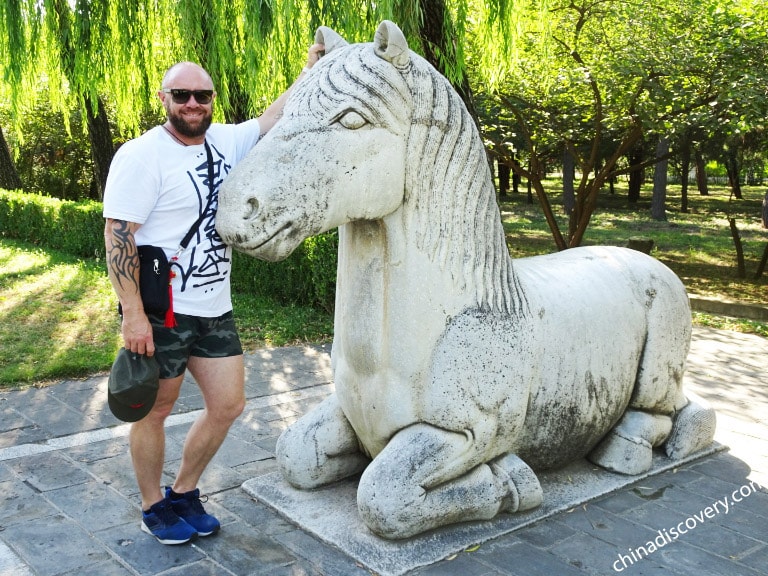 Sacred Way in Spring
Sacred Way in Spring
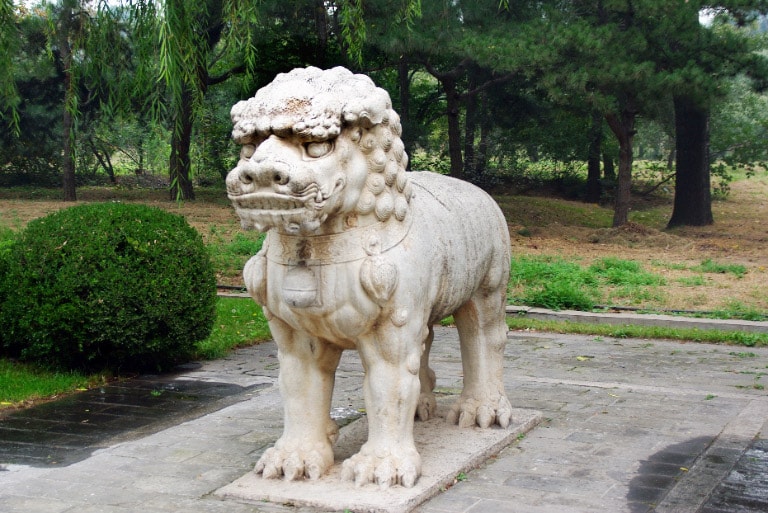 Sacred Way in Autumn
Sacred Way in Autumn
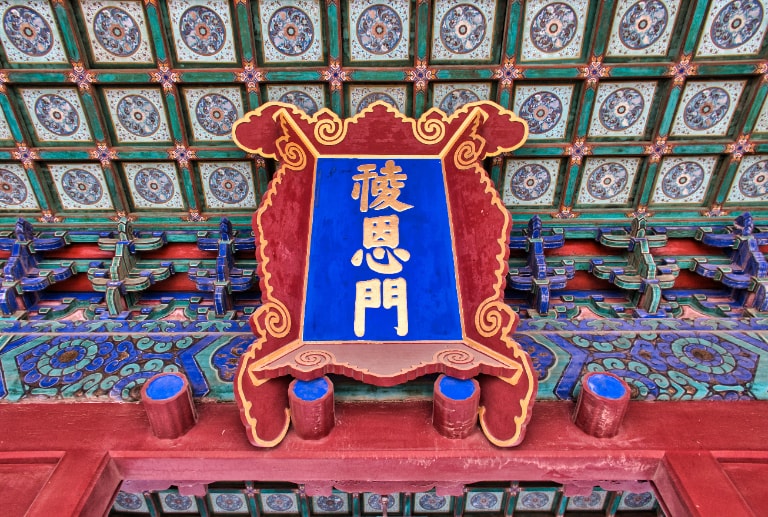 Ling'en Palace in Changling Tomb
Ling'en Palace in Changling Tomb
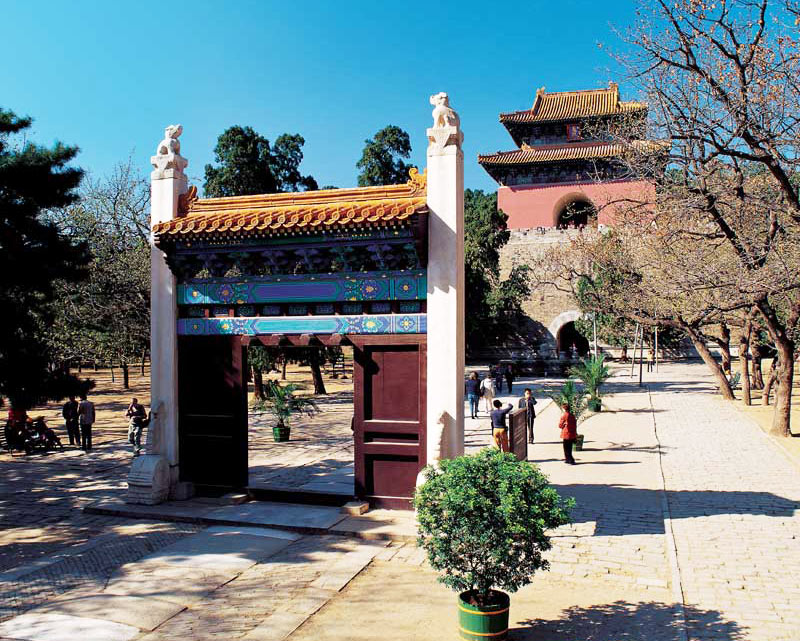 Lingxing Gate in Changling Tomb
Lingxing Gate in Changling Tomb
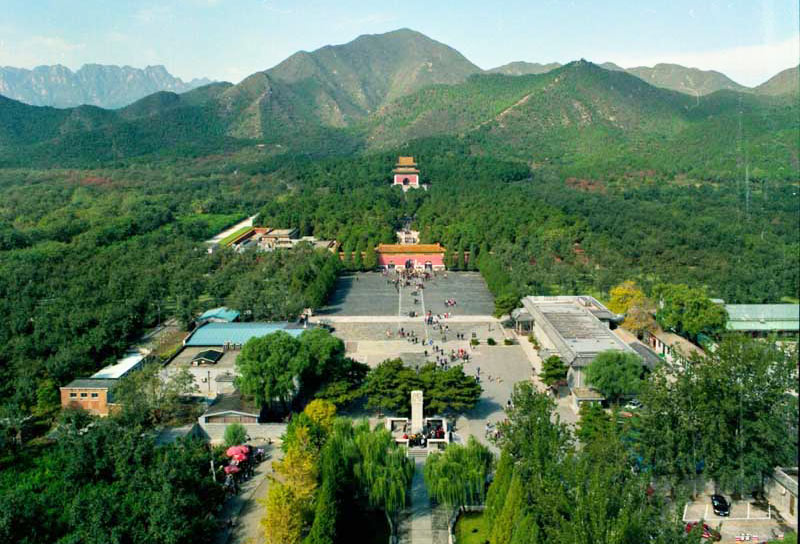 Dingling Tomb
Dingling Tomb
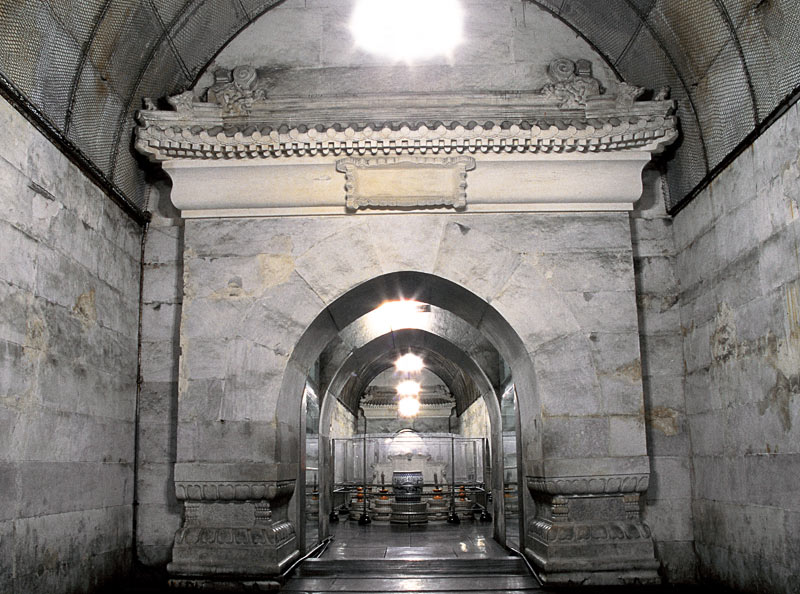 Underground Palace in Dingling Tomb
Underground Palace in Dingling Tomb
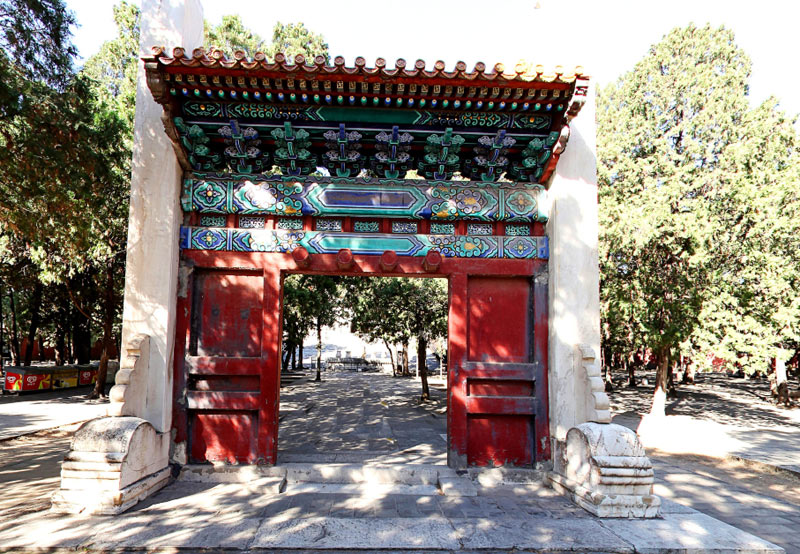 Zhaoling Tomb
Zhaoling Tomb
Located in the northwest of Beijing City and 50 km away from Tiananmen Square, Ming Tombs is not quite easy to get.
If you want to get rid of hustle of public transportation and troublesome navigation, you can book a private tour package which covers sightseeing, dining and transfer from us. Our local tour guide and driver will escort you to Ming Tombs with speed and convenience, and take care of all the details. You just need to focus on sightseeing.
Juyongguan Great Wall is one of the most-renowned parts of the Great Wall which was built in a 15 kilometers long valley. Here you will have a spectacular view of surrounding mountains with countless peaks, verdant trees and luxuriantly blooming flowers. As the record of one monument built in Ming Dynasty, Juyongguan Great Wall was regarded as the No. 1 Pass in the world. Far back in Jin Dynasty in 800 years before, it was listed in the Eight Great Sights of Ancient Yanjing and praised as “the Emerald Juyong Guan”. Juyongguan is the north portal to Beijing, so it’s quite precipitous and steep that ten thousand are unable to get through even one man guards here.
>> 4 Days Classic Beijing Tour Package
>> 5 Days Beijing Essence Tour with Real Hutong Life Experience
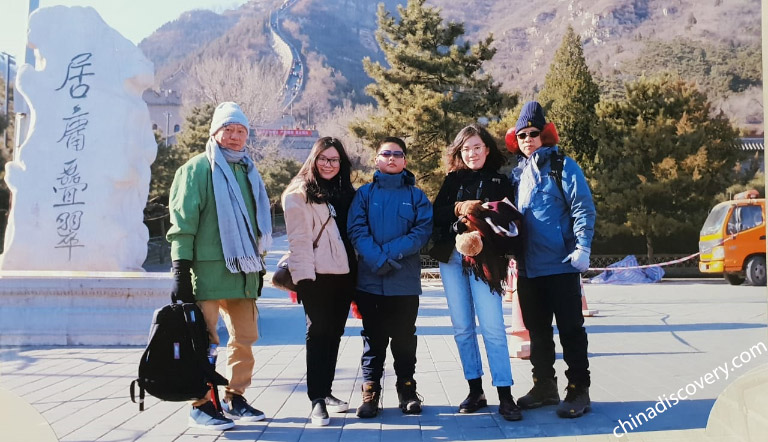 Juyongguan Great Wall
Juyongguan Great Wall
| Attractions | Opening Hours | Admission Fee |
| The Sacred Way | 8:00 - 17:30 (April 1 to October 31) 8:30 - 17:00 (November 1 to March 31) |
30 RMB (April 1 to October 31) 20 RMB (November 1 to March 31) |
| Changling Tomb | 8:00 - 17:30 (April 1 to October 31) 8:30 - 17:00 (November 1 to March 31) |
45 RMB (April 1 to October 31) 30 RMB (November 1 to March 31) |
| Dingling Tomb | 8:00 - 17:30 (April 1 to October 31) 8:30 - 17:00 (November 1 to March 31) |
60 RMB (April 1 to October 31) 40 RMB (November 1 to March 31) |
| Zhaoling Tomb | 8:00 - 17:30 (April 1 to October 31) 8:30 - 17:00 (November 1 to March 31) |
30 RMB (April 1 to October 31) 20 RMB (November 1 to March 31) |
| Juyongguan Great Wall | 8:00 - 17:00 (April 1 to October 31) 8:30 - 16:30 (November 1 to March 31) |
40 RMB (April 1 to October 31) 35 RMB (November 1 to March 31) |
| All | / | 130 RMB (April 1 to October 31) 100 RMB (November 1 to March 31) |
Ticket fee is for reference only. For up-to-date information, feel free to contact us
To explore the best highlights of Beijing, including Tiananmen Square, Forbidden City, Great Wall, Temple of Heaven, Summer Palace, Hutongs, you only need 2 or 3 full days, which is available for to 72 Hours Visa-free for Transit in Beijing. If you have more days, you can go for an in-depth Great Wall hiking or photography, and explore more hidden attractions in the city.
>> 4 Days Classic Beijing Tour Package
As the most popular transportation hub in China, you can easily travel from Beijing to any other hot travel destinations in China by flight or train, such as Xian, Shanghai, Yangtze River, Guilin, Chengdu, Tibet and other popular destinations in China by flight or train.. China Discovery has designed many great China tour packages from Beijing for you. Please make your choice from our collections or let us customize one for you.
Top 3 Beijing tours chosen by most customers to explore Beijing in the best way. Check the detailed itinerary, or tailor your own trip now with us.
Start planning your tailor-made holiday to China by contacting one of our specialists. Once inquired, you’ll get a response within 0.5~23.5 hours.
Customize a Trip